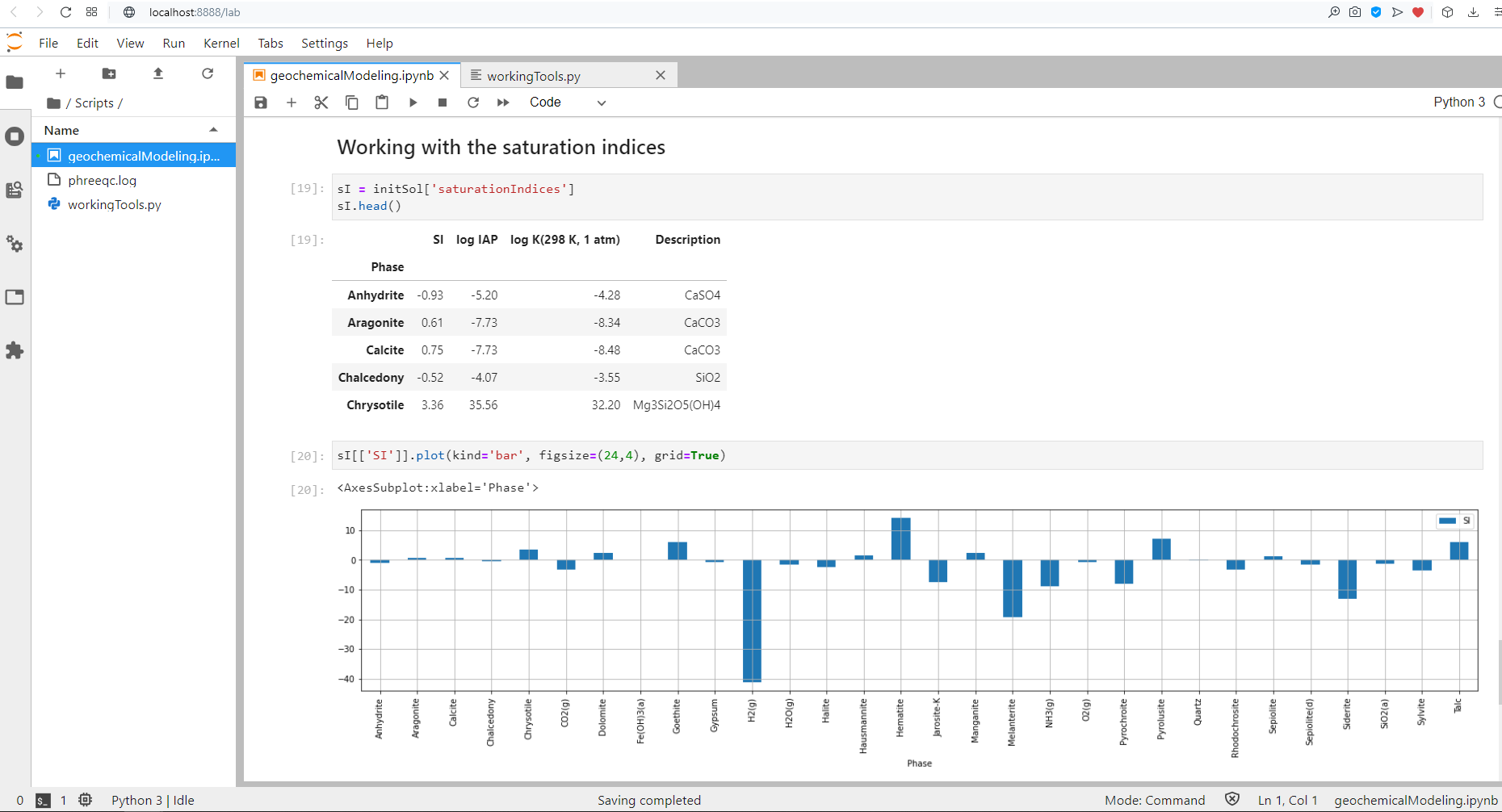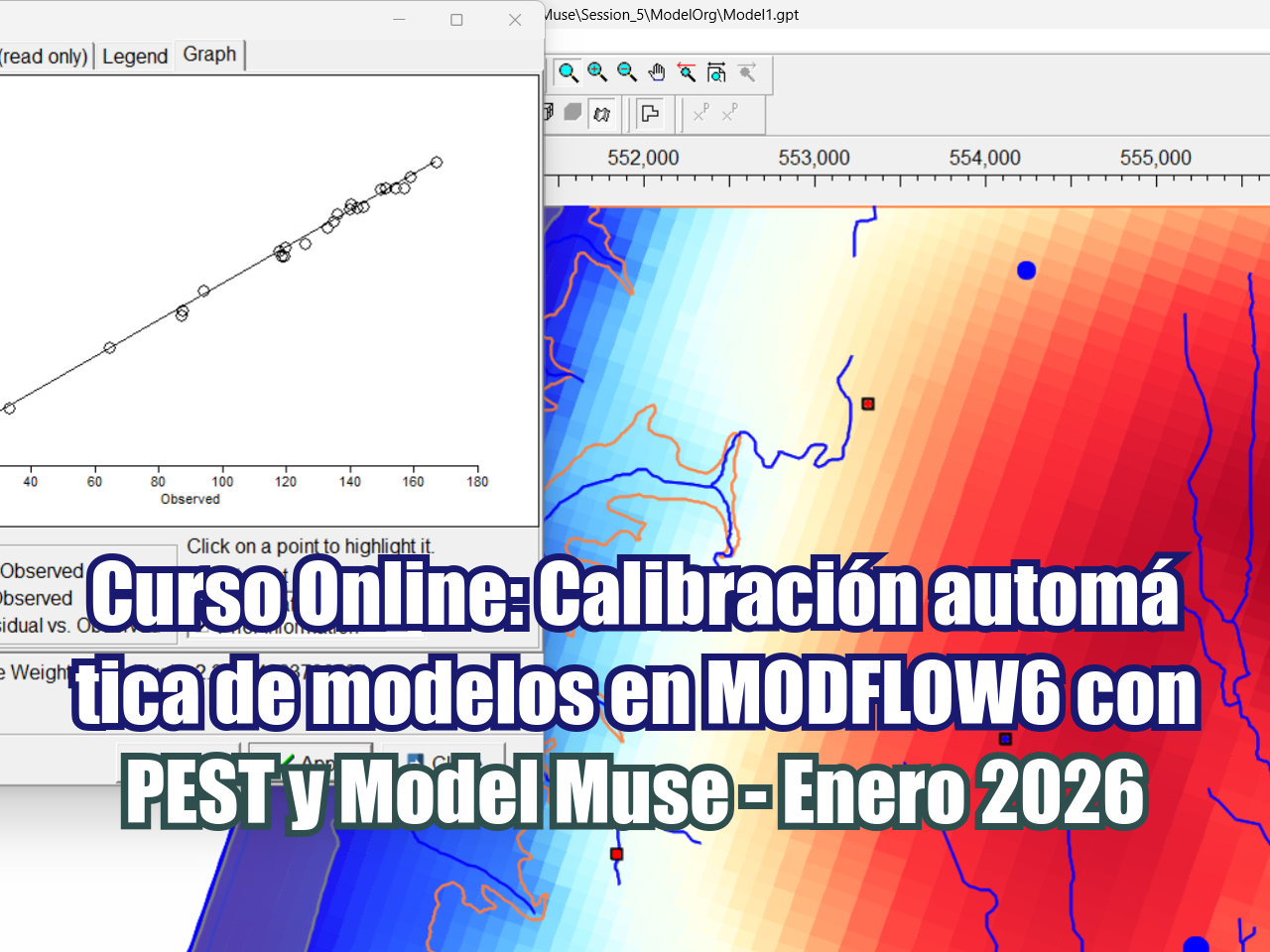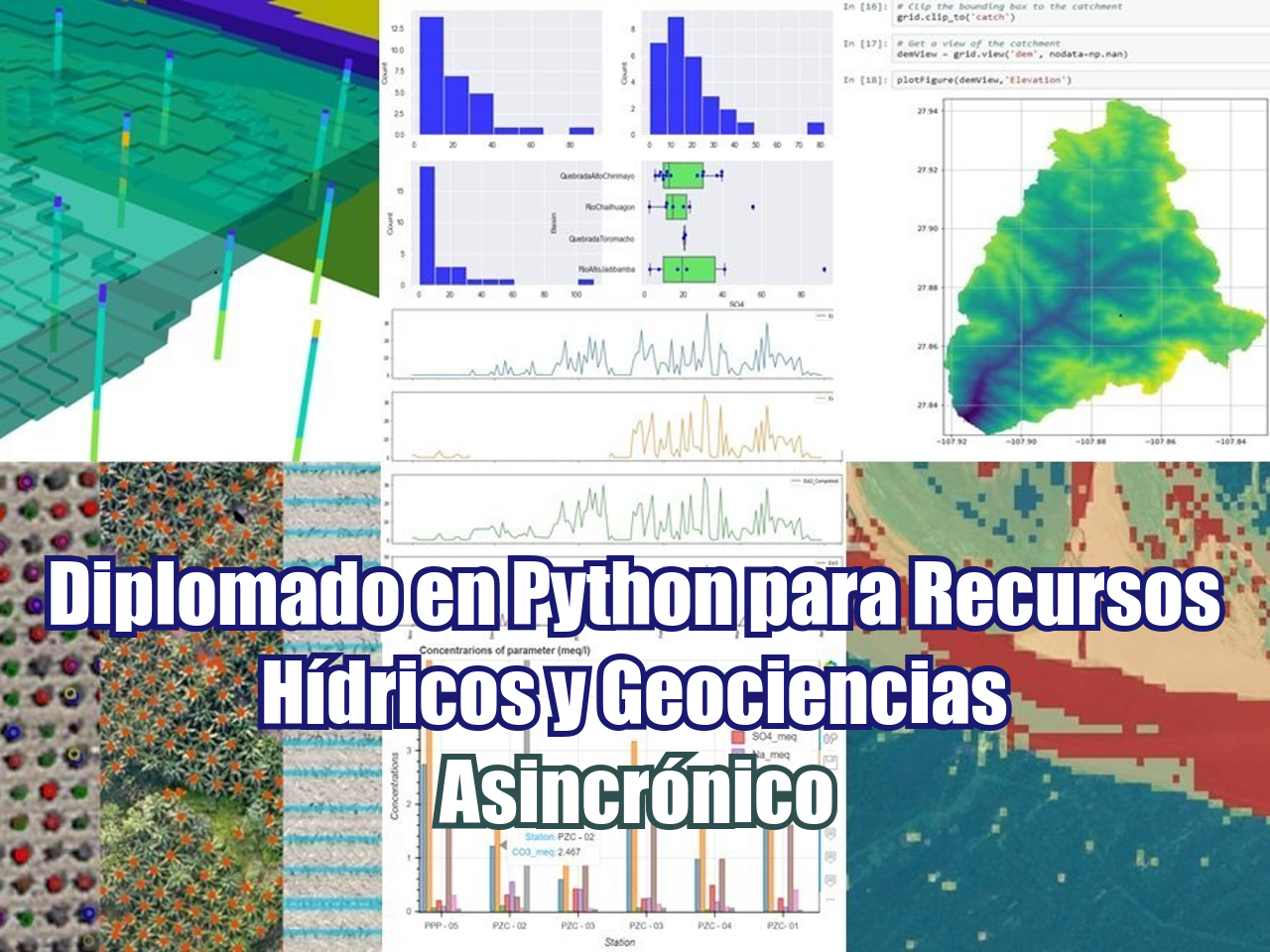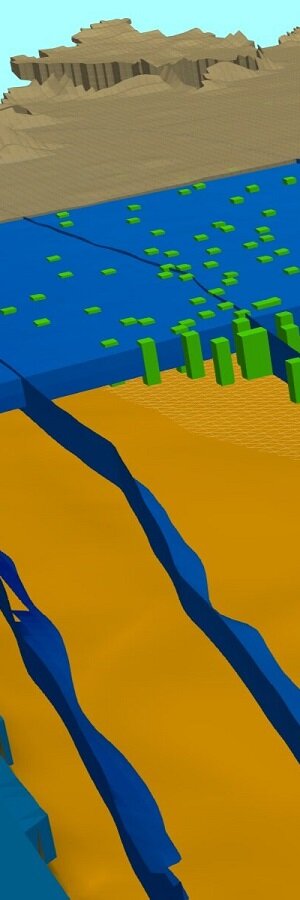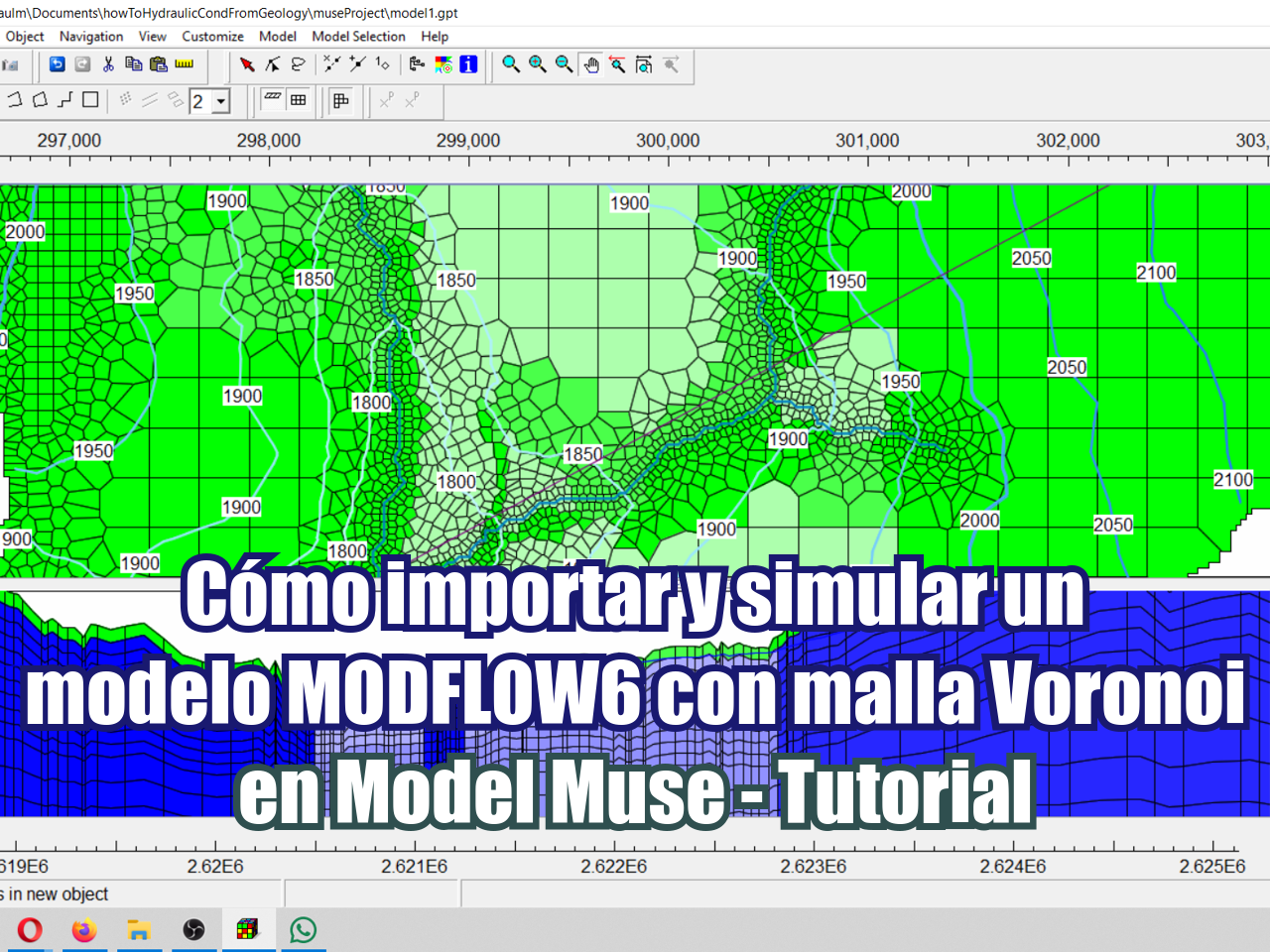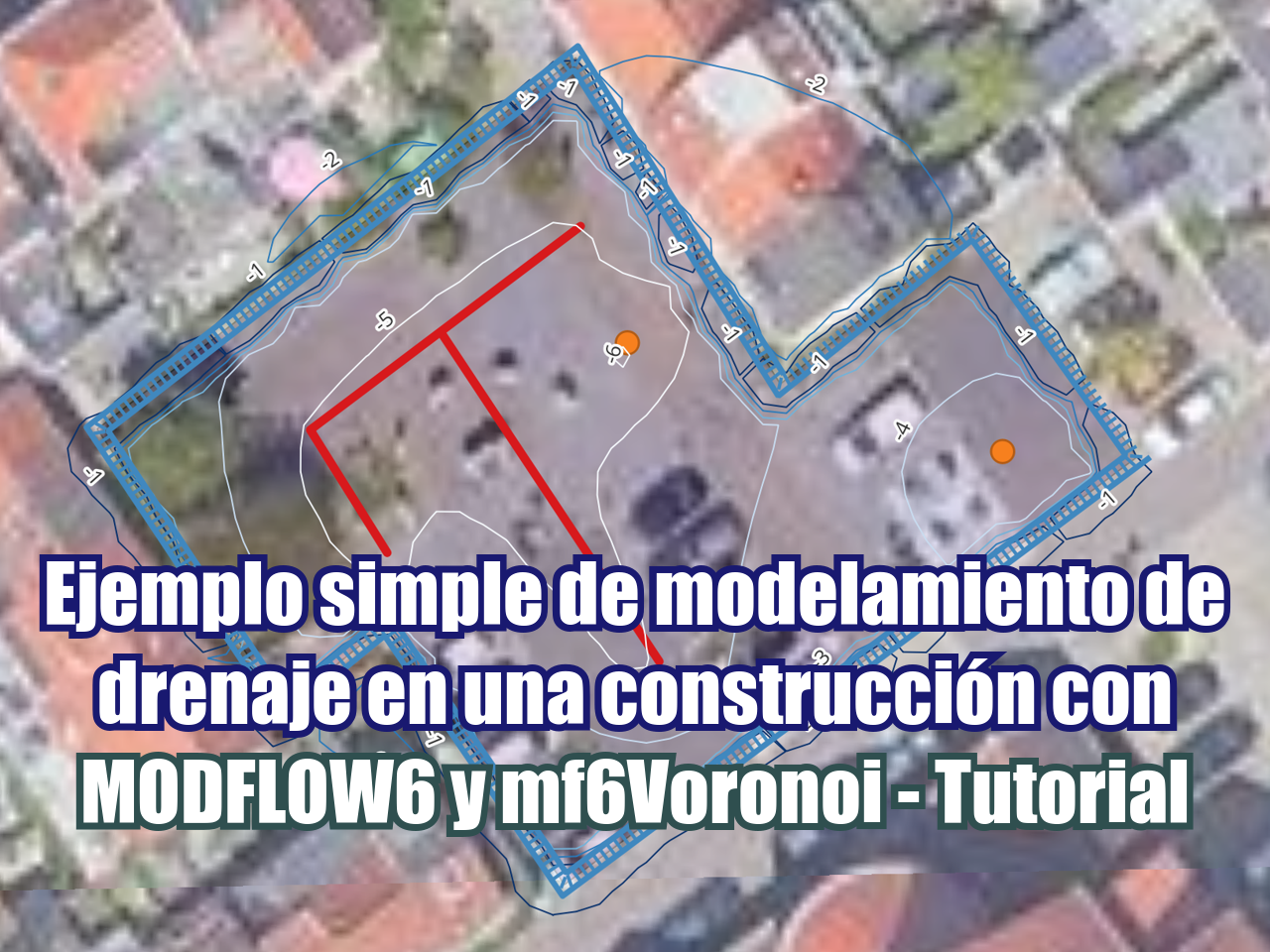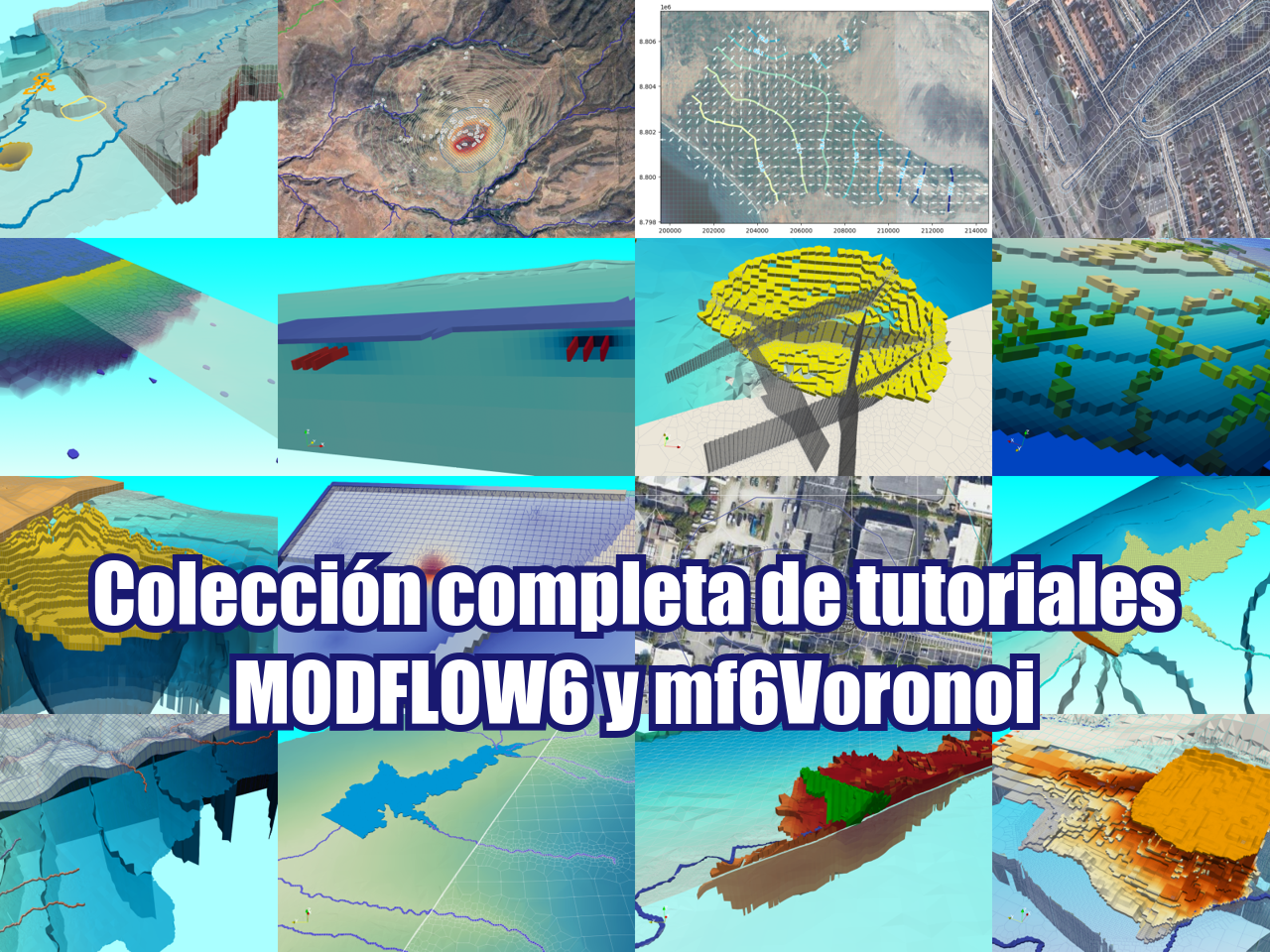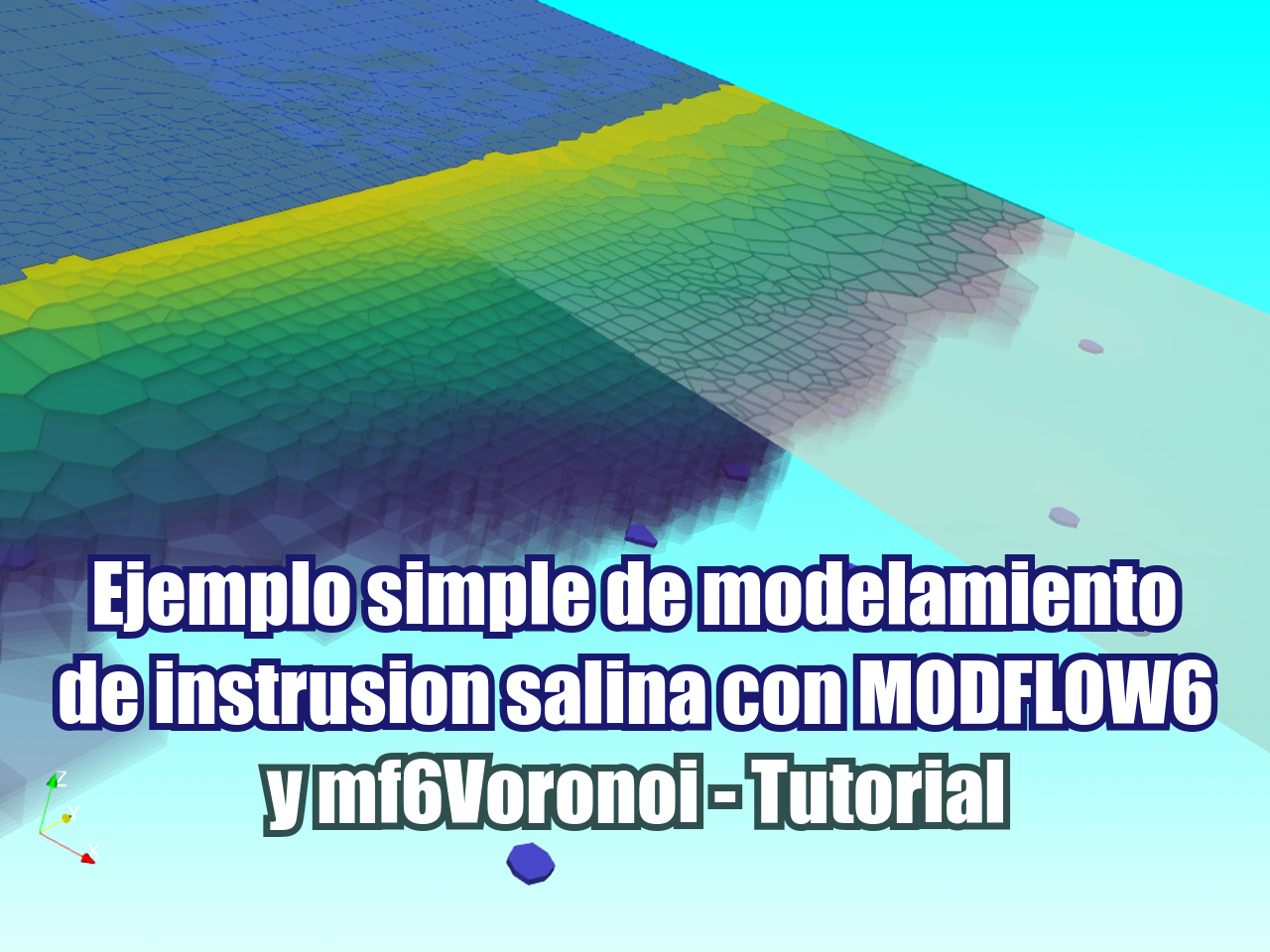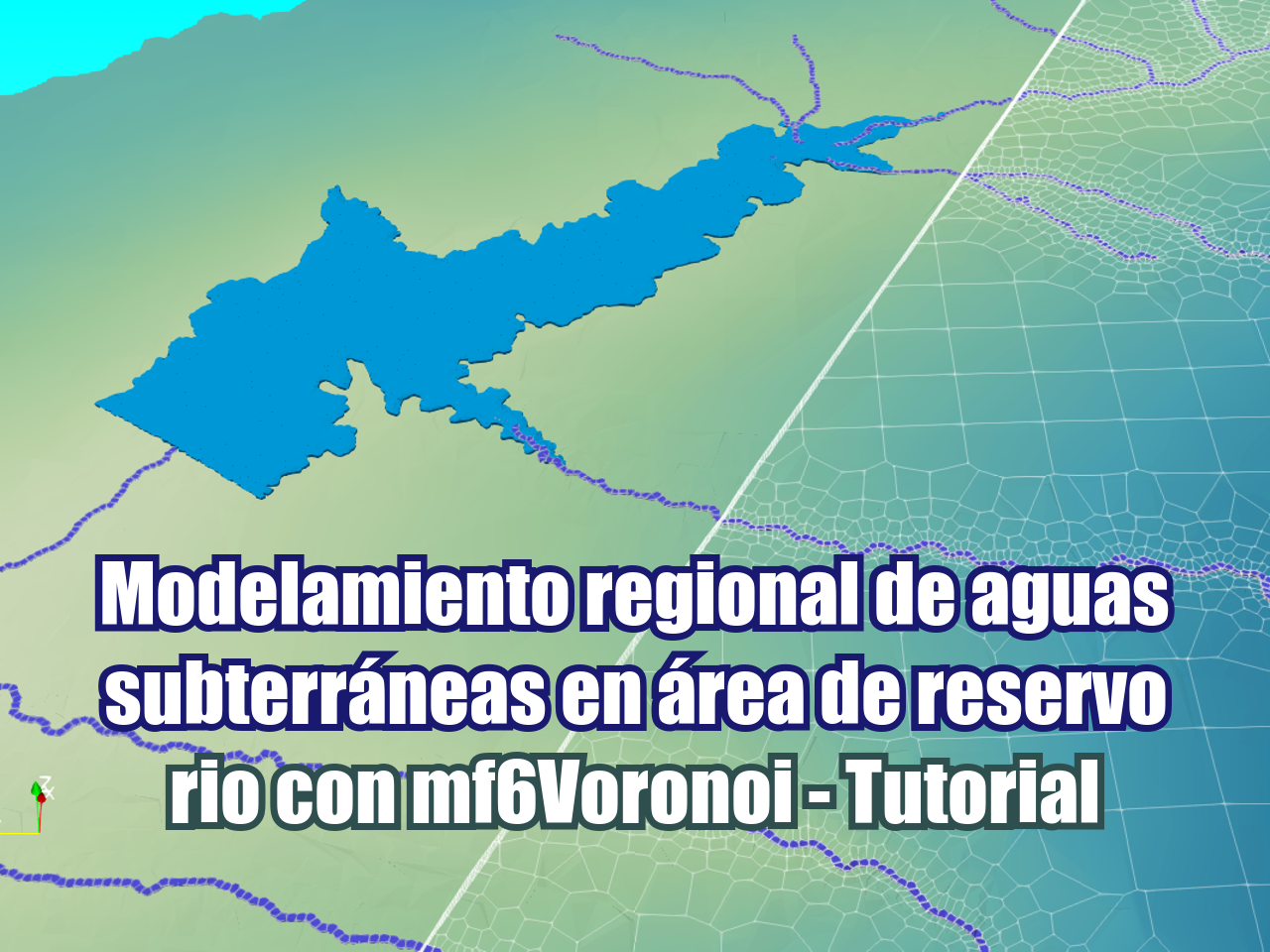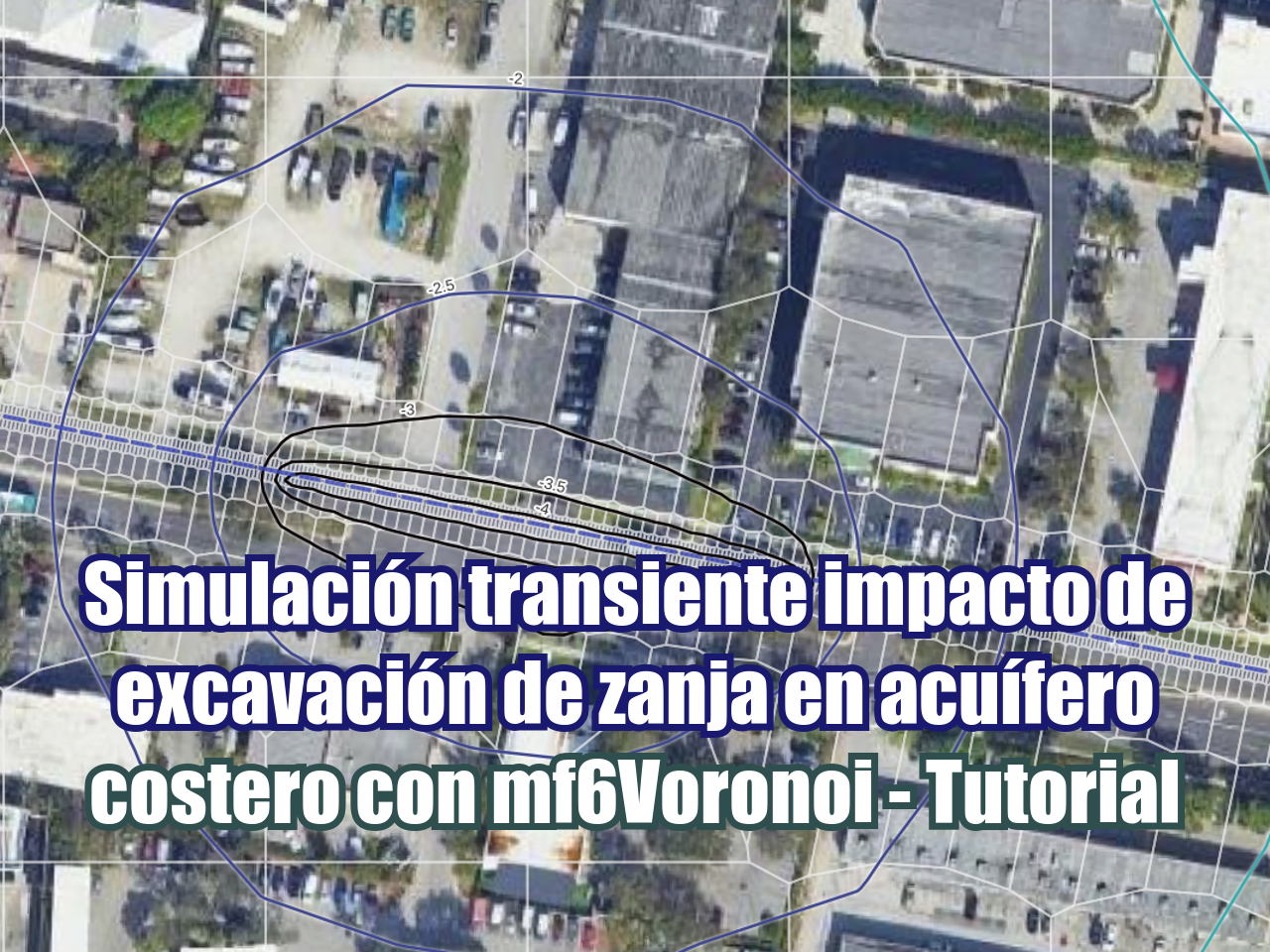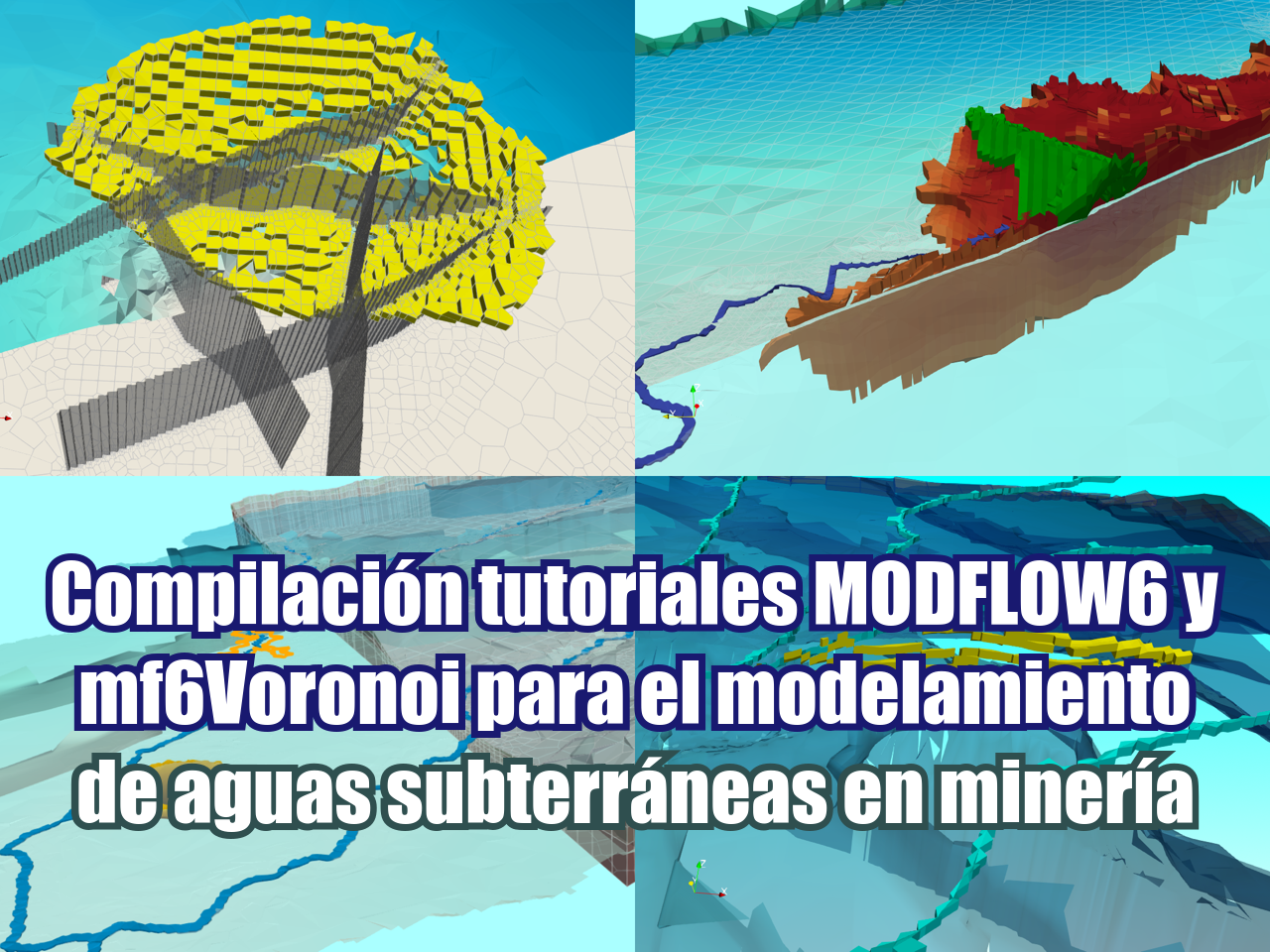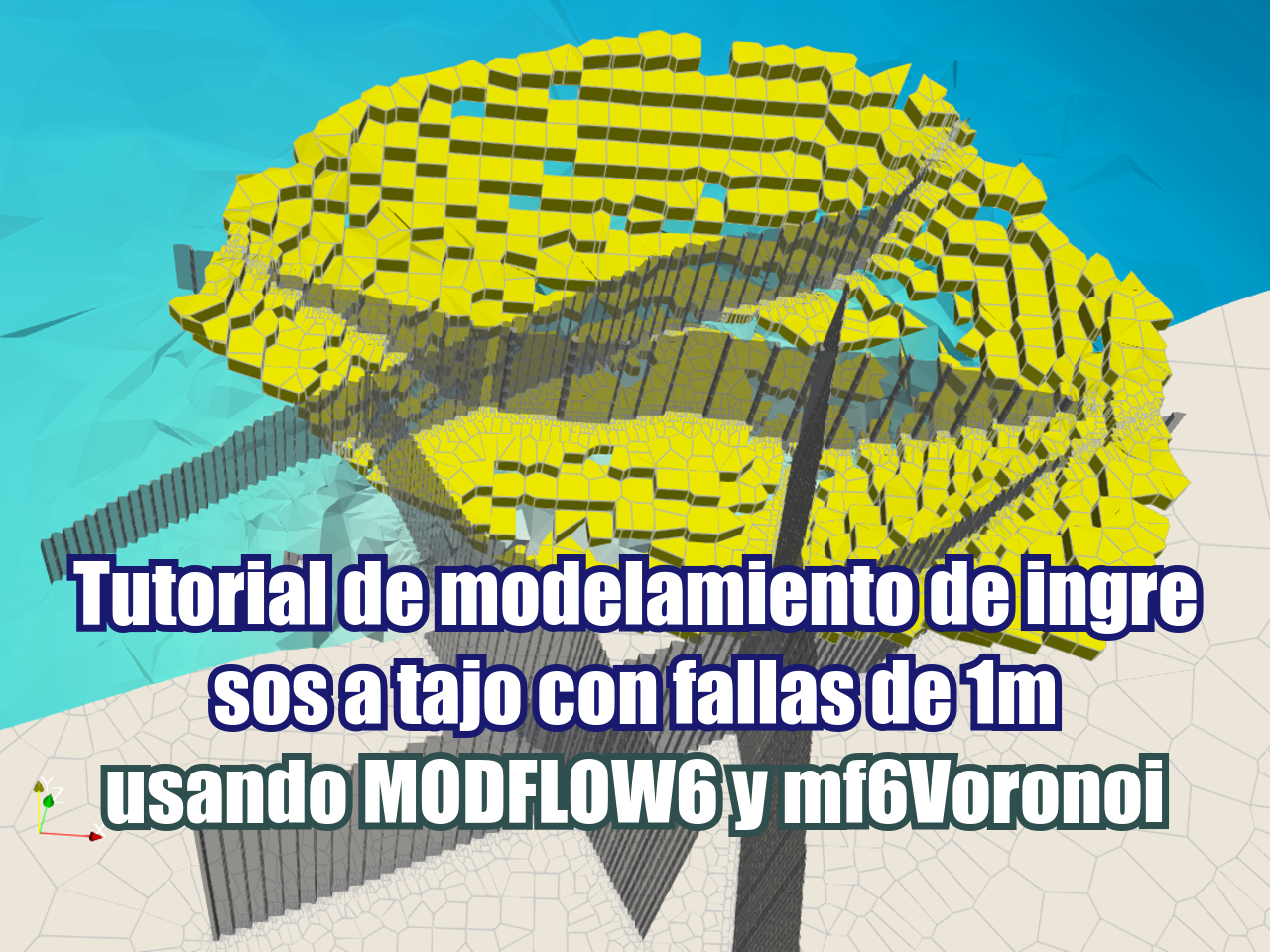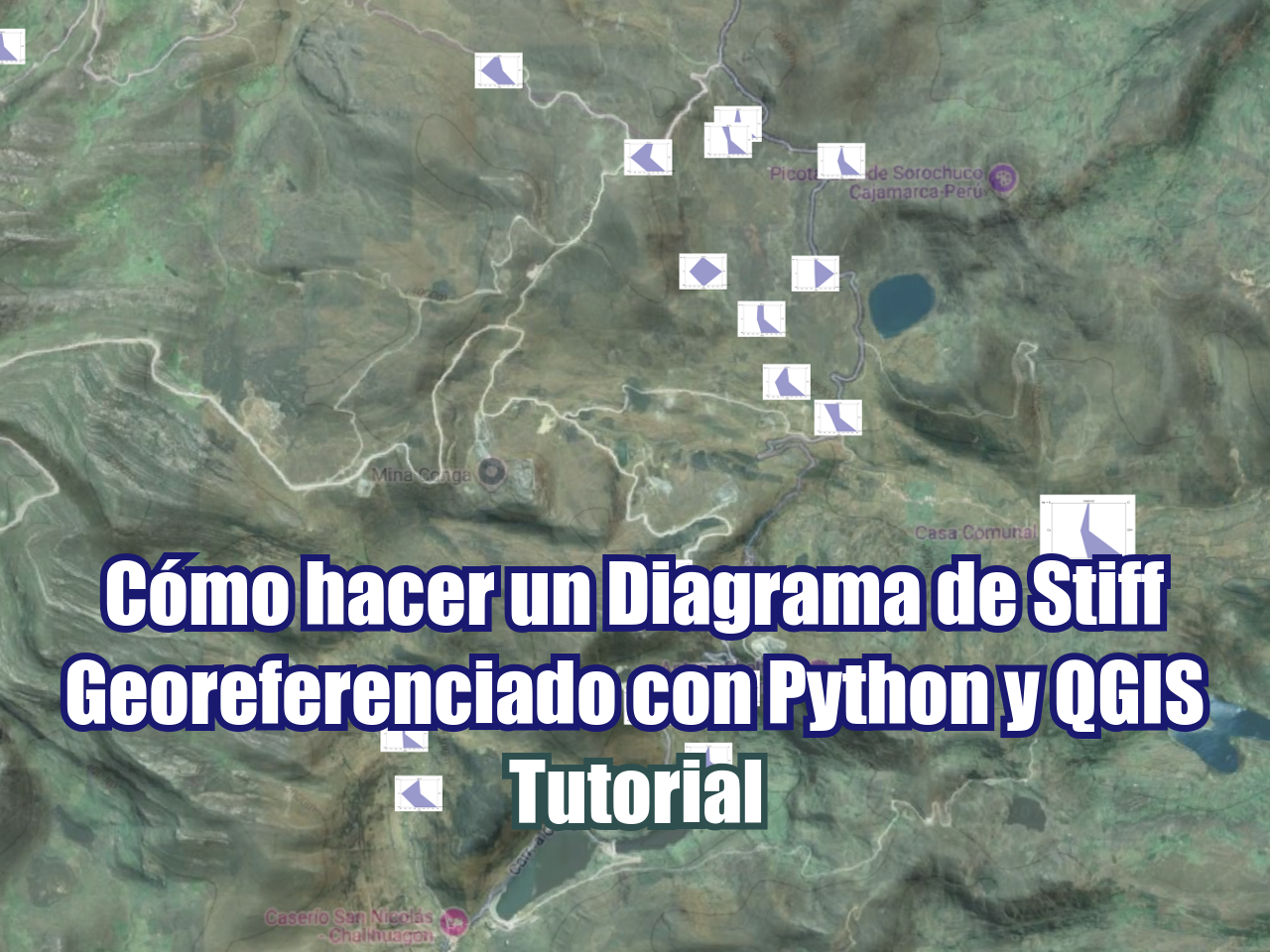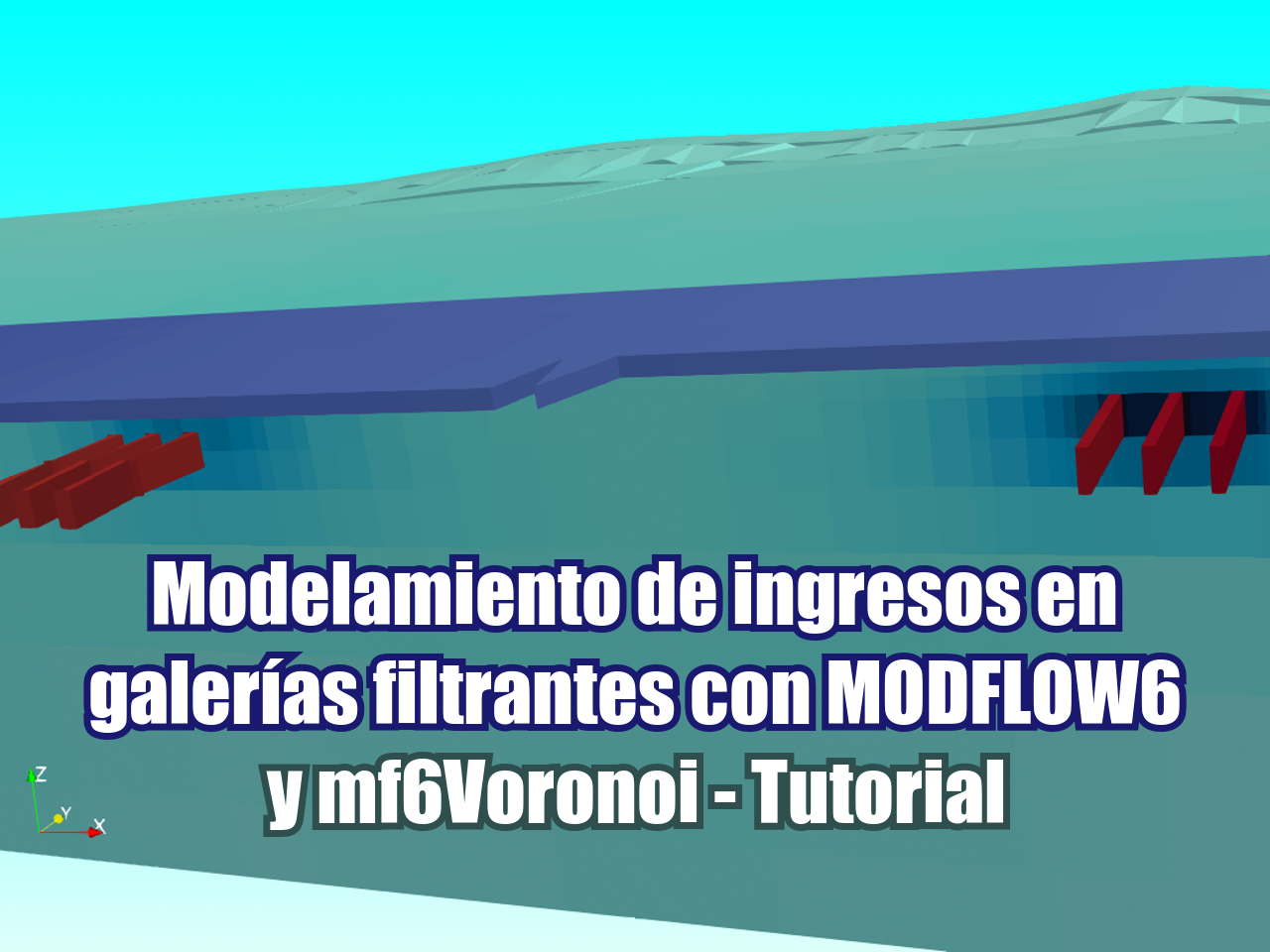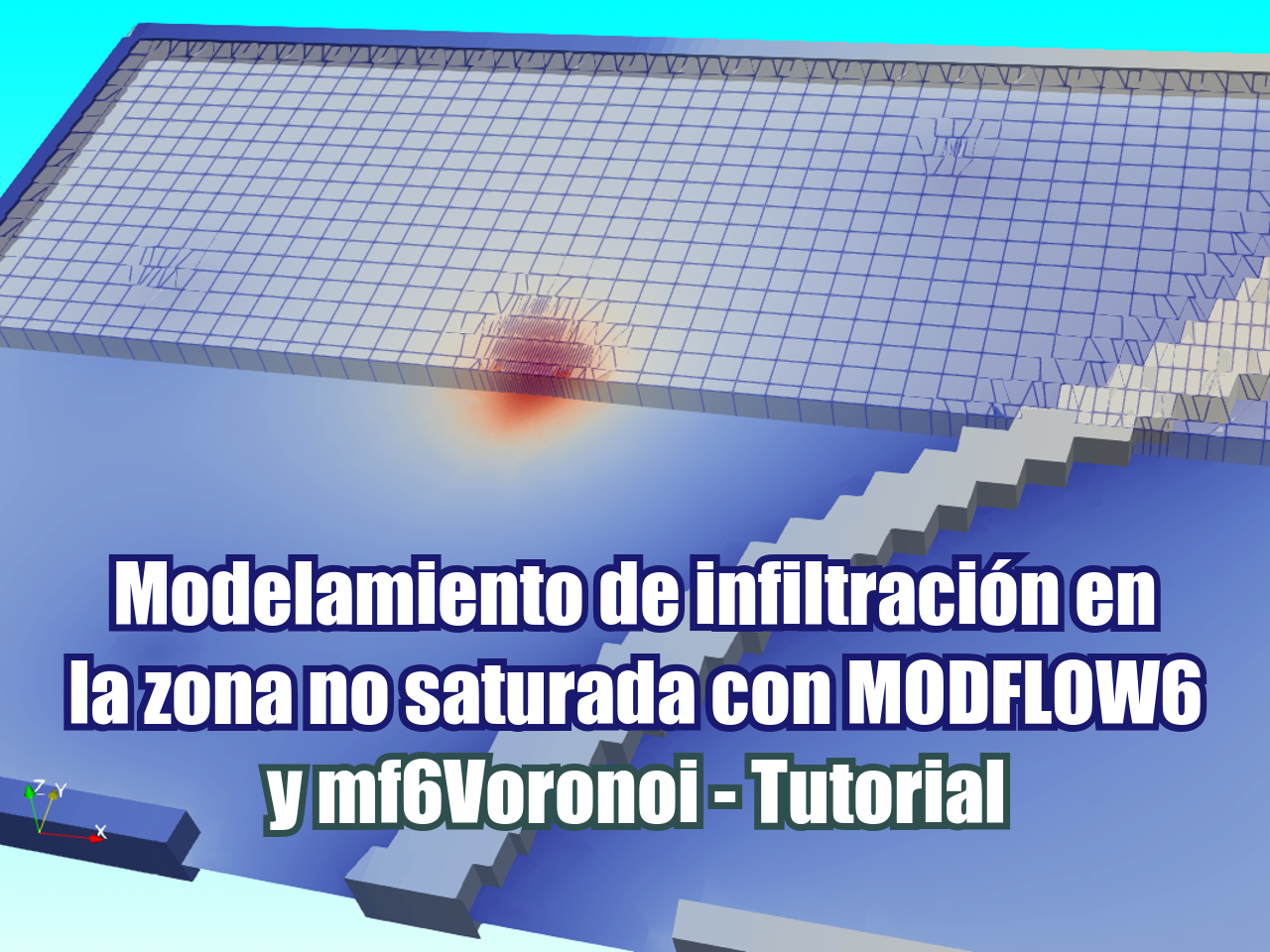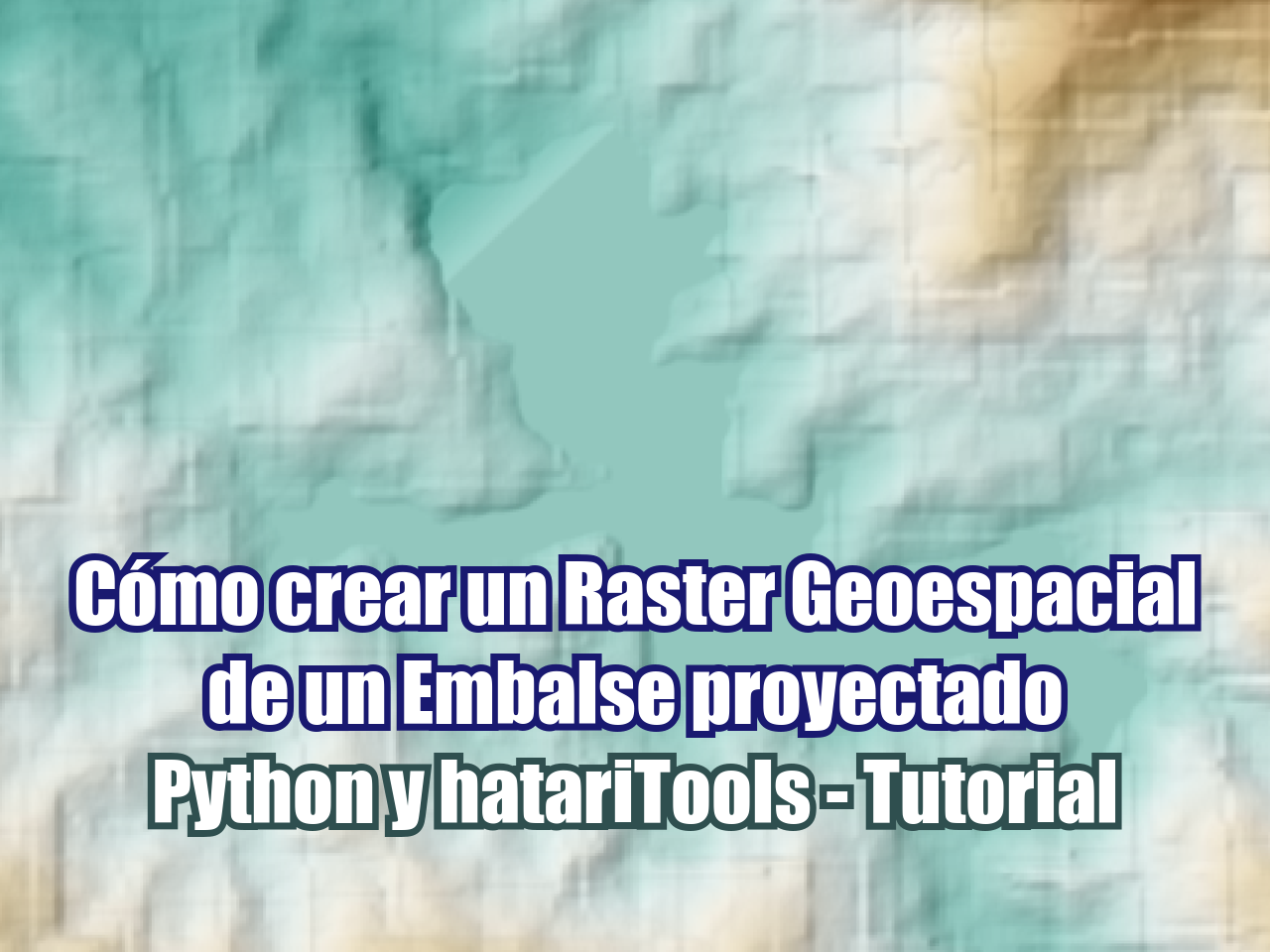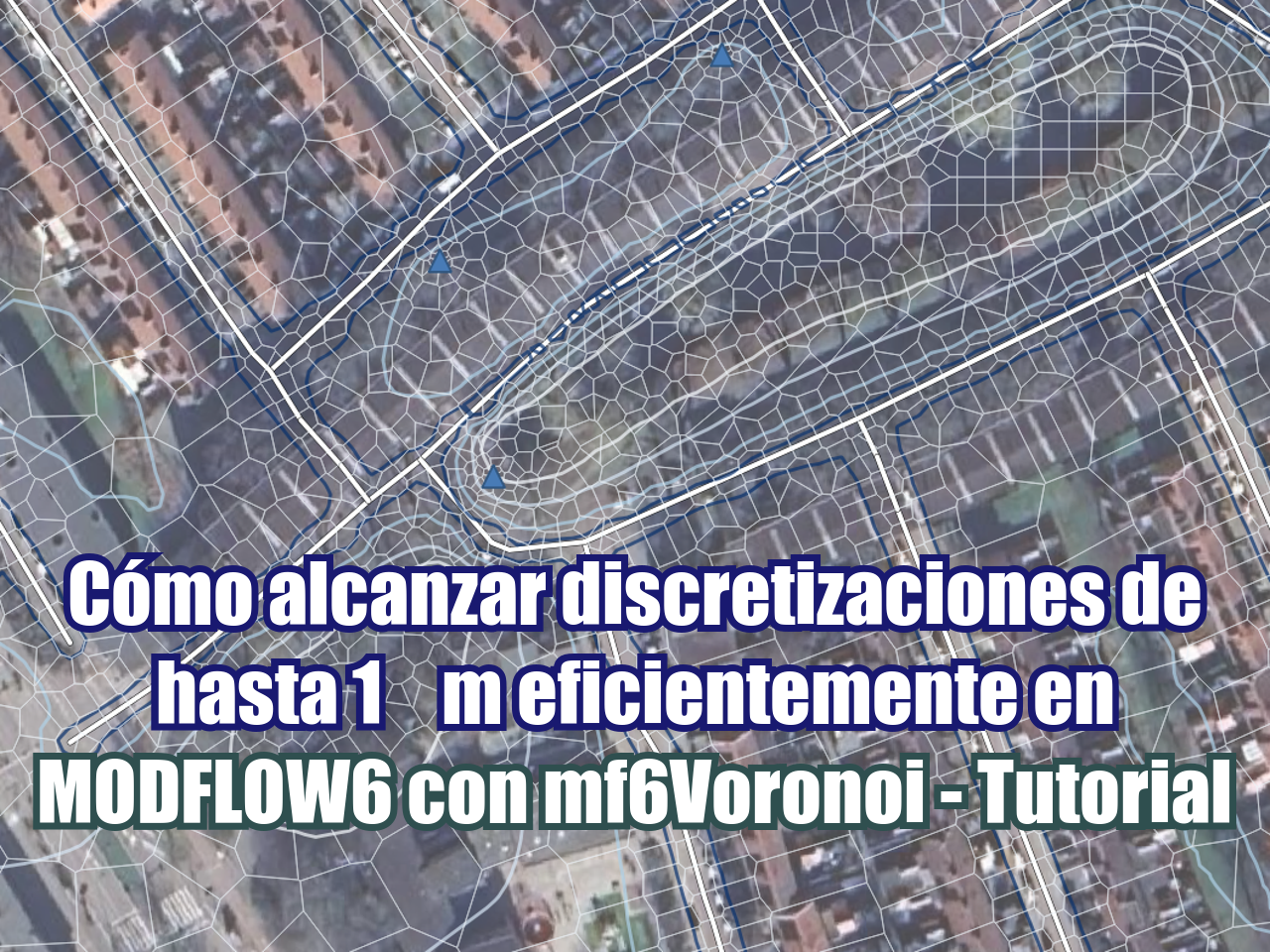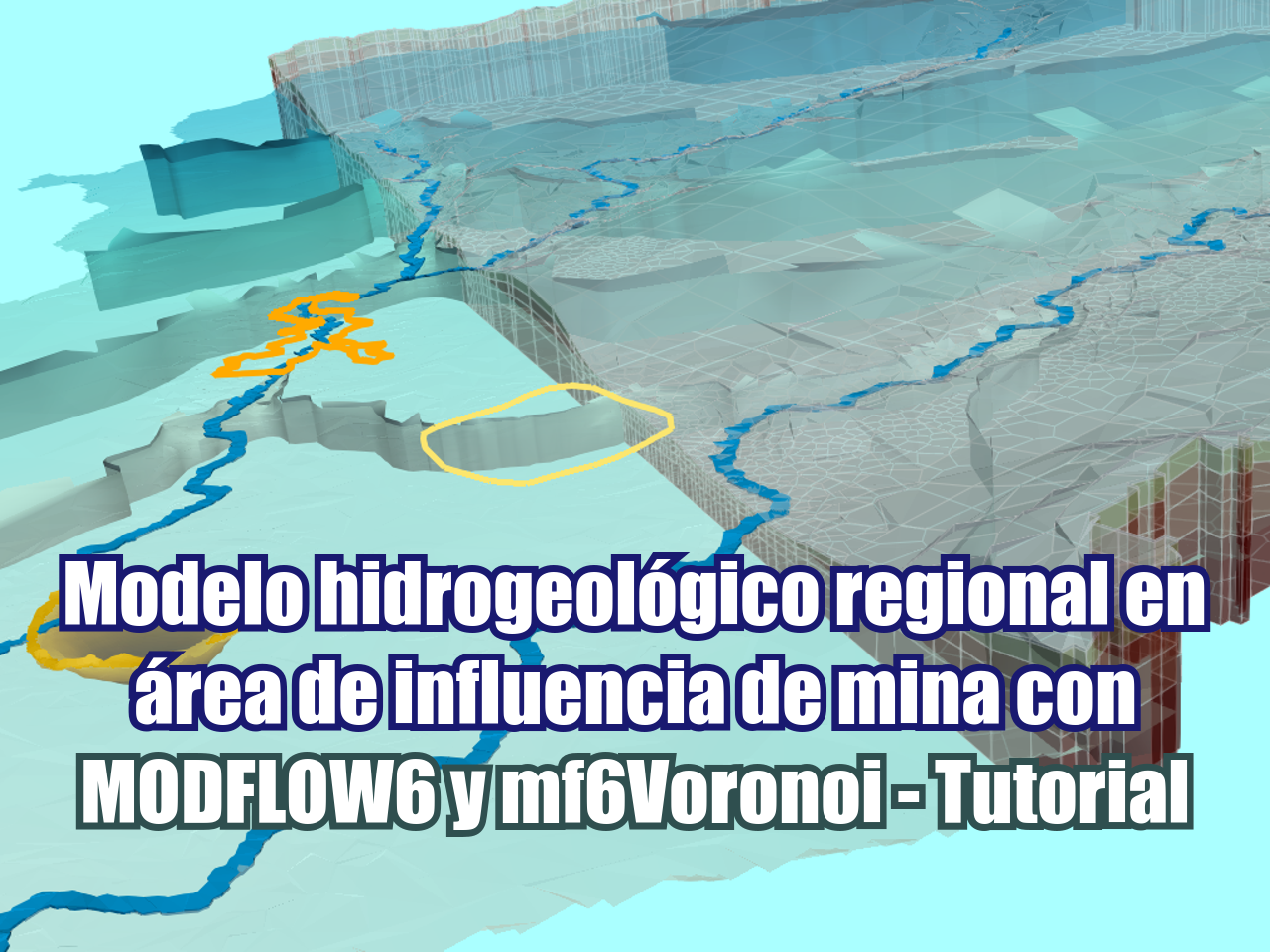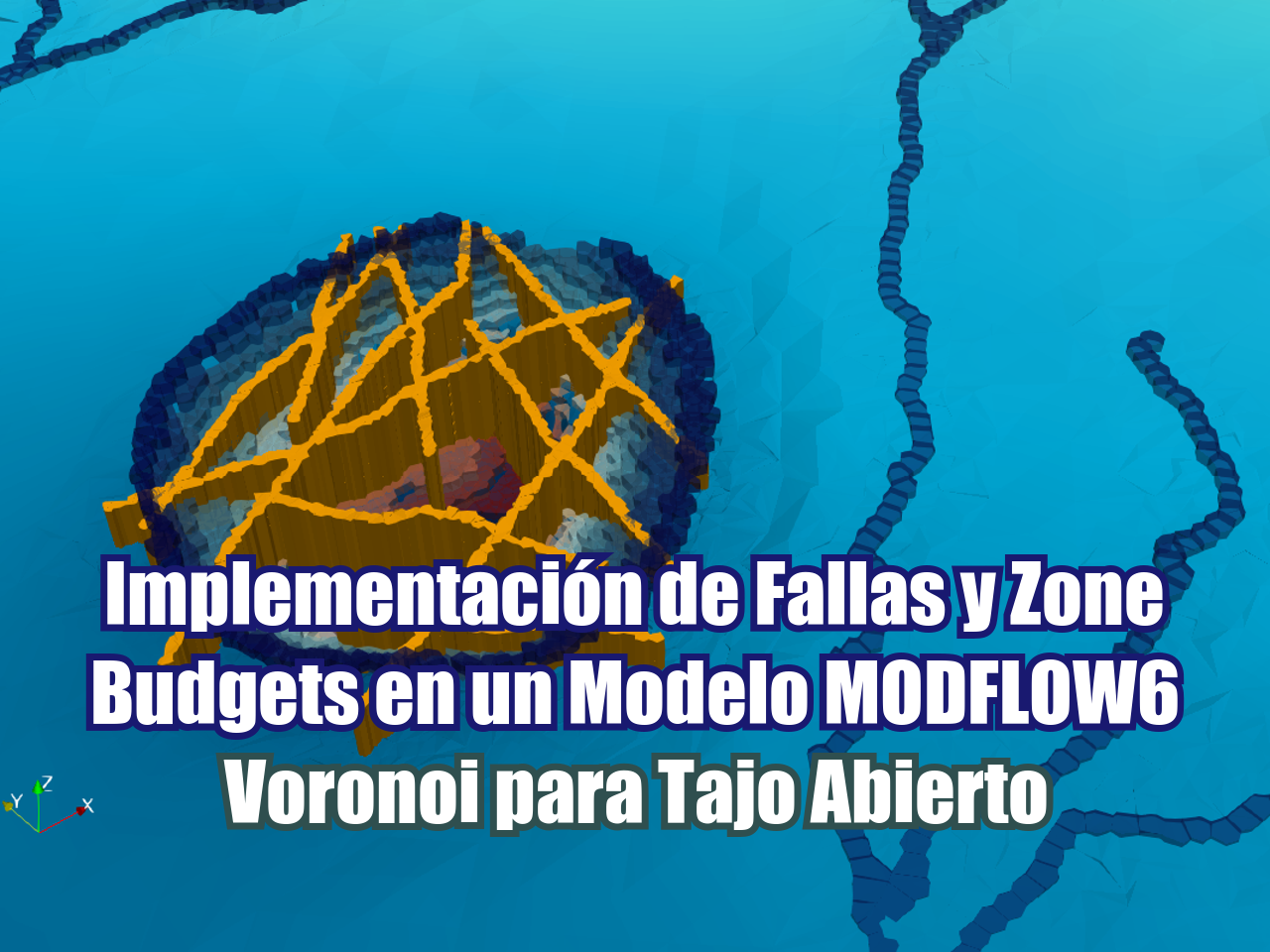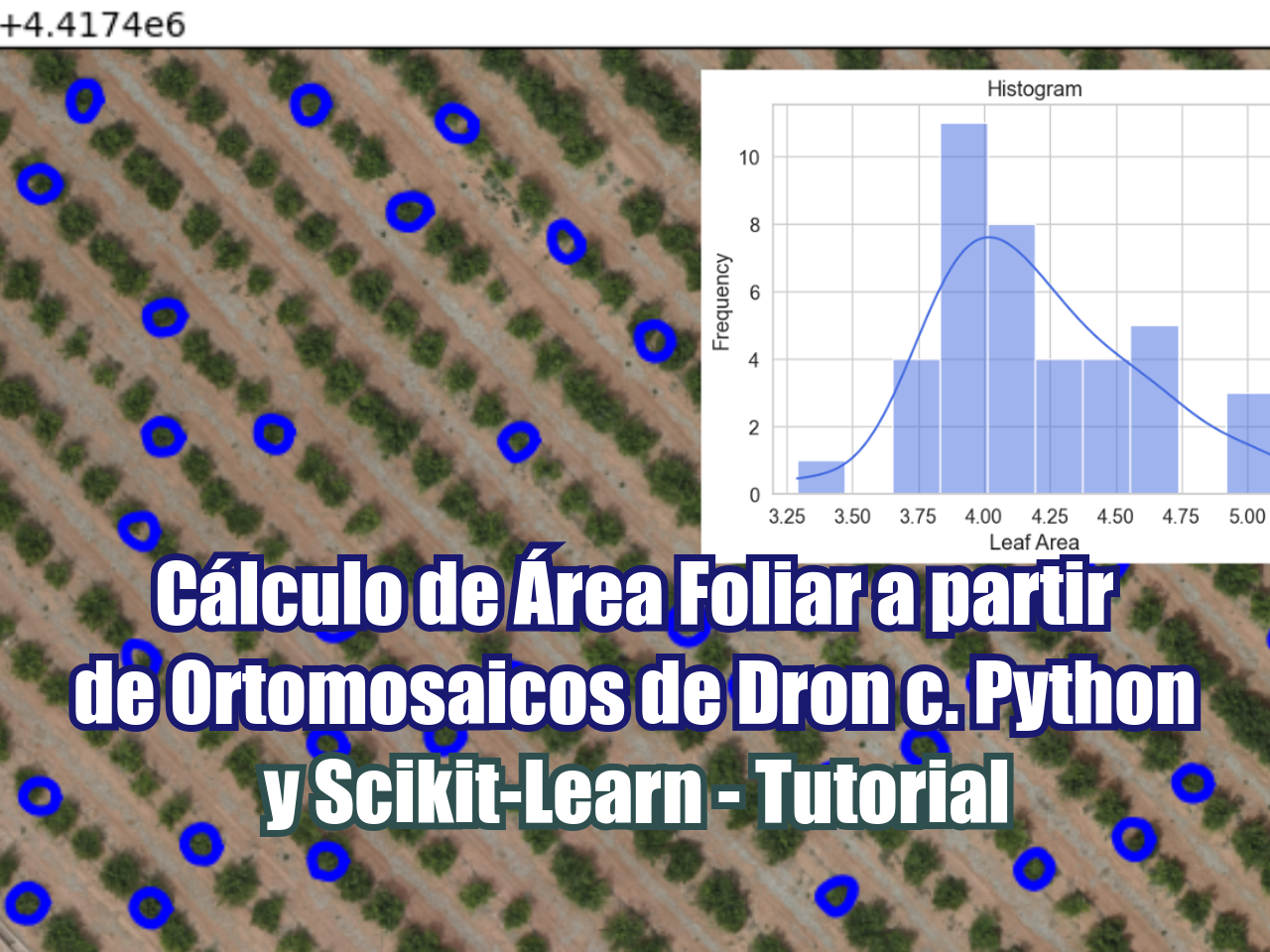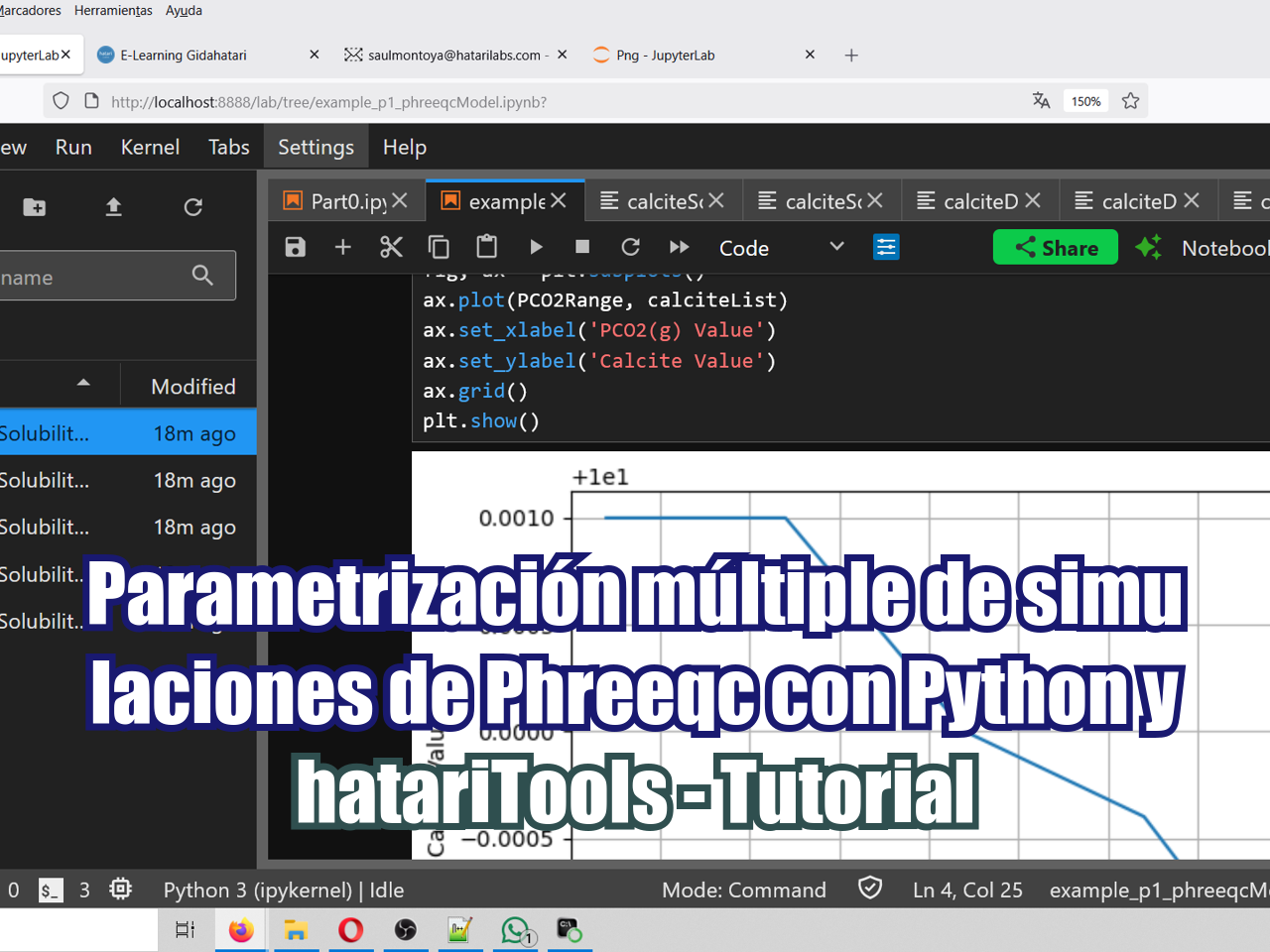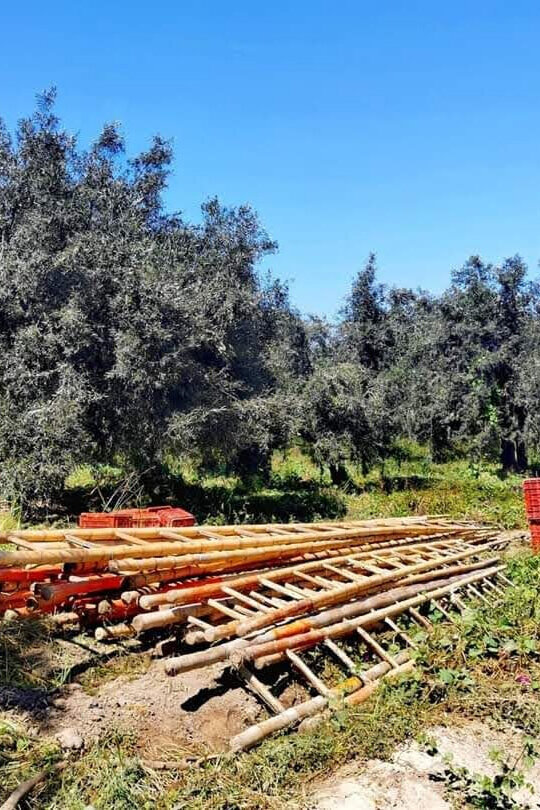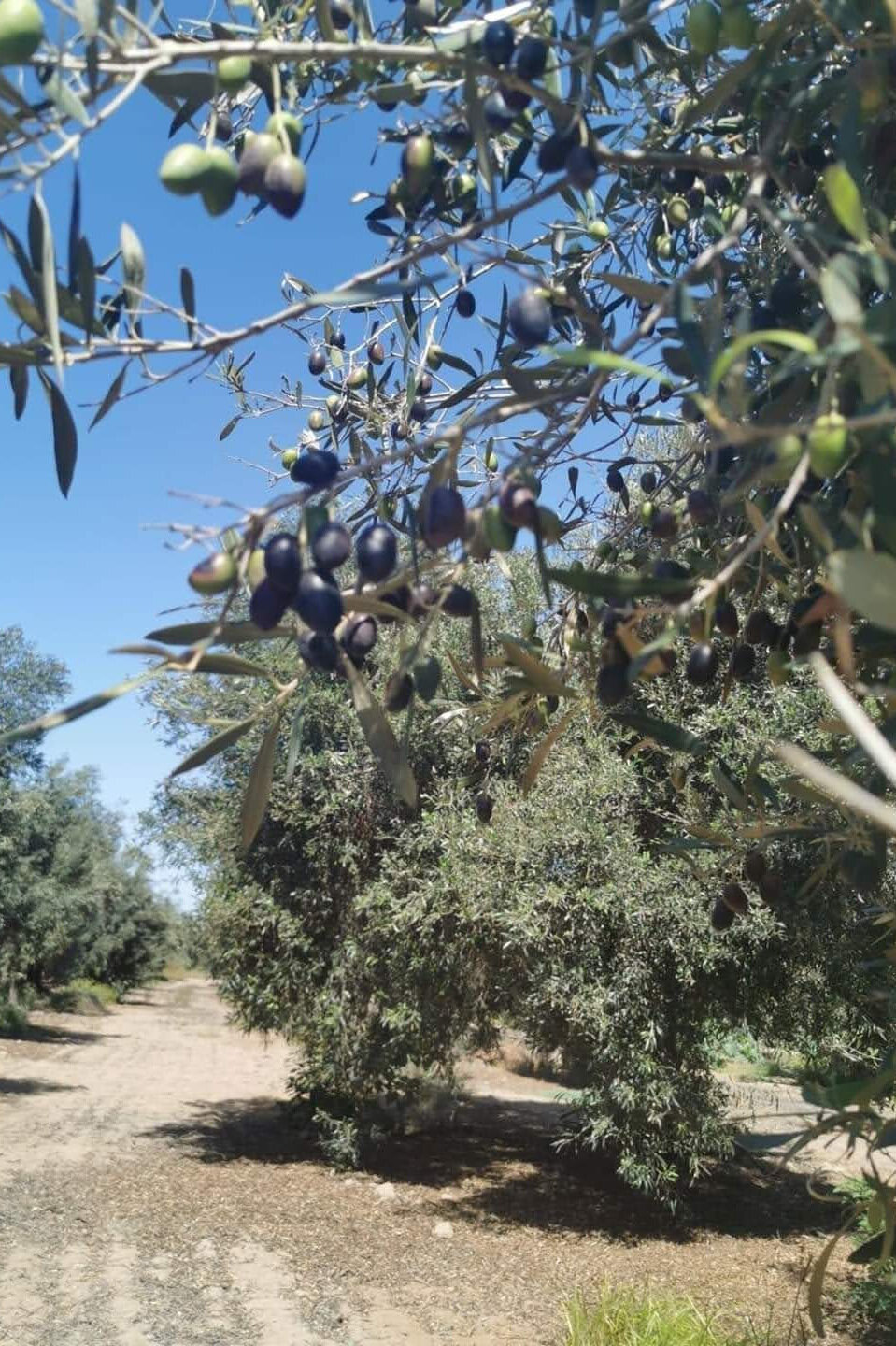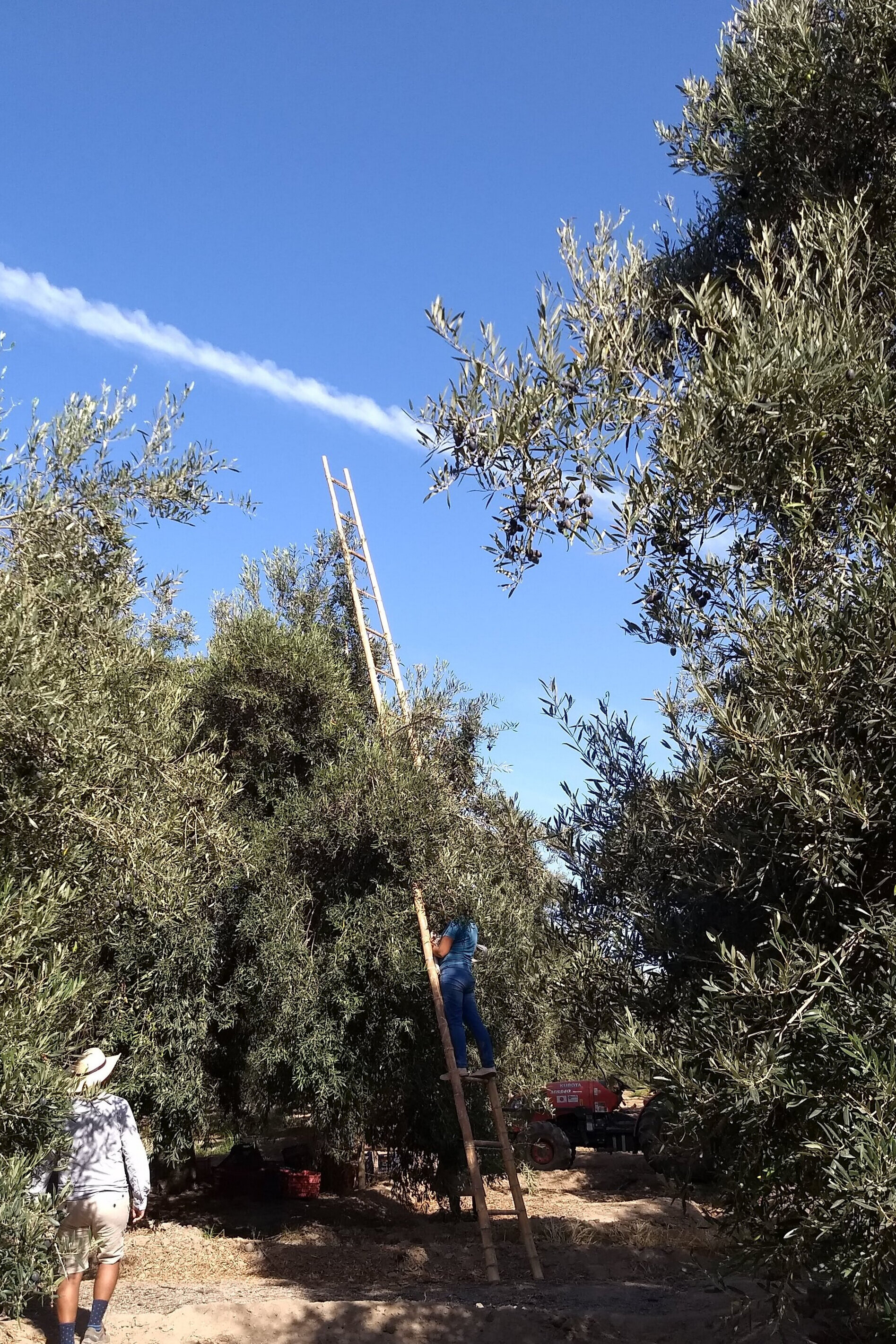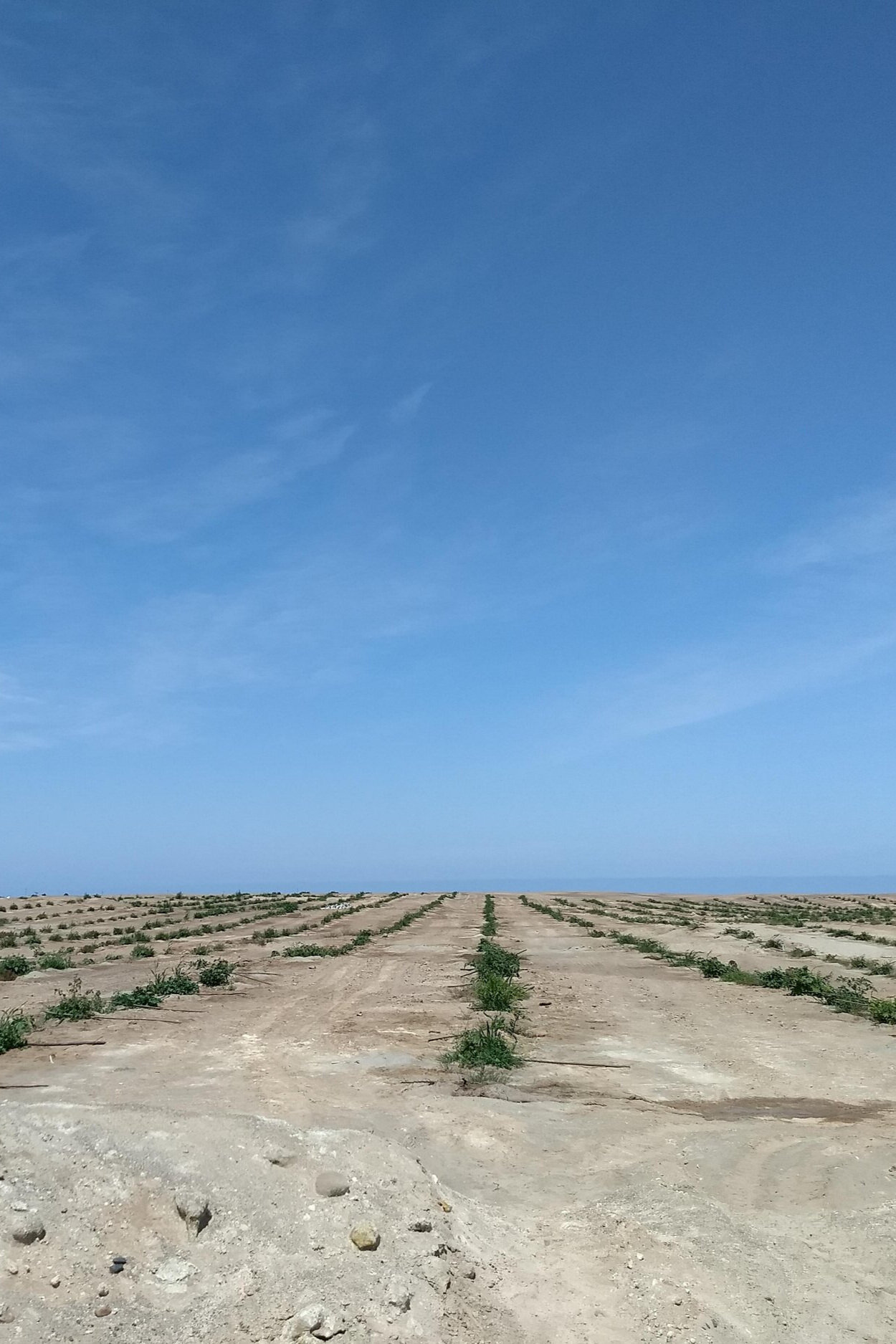El modelo de especiación permite calcular la distribución de especies acuosas en una solución. Phreeqc es capaz de simular este cálculo de especiación y vamos a demostrar esta capacidad en un caso de estudio de especies acuosas en agua de mar.
Hemos realizado un tutorial para el modelamiento de especiación de agua de mar con Phreeqc que se ejecuta en Python en un entorno de Jupyter Lab. El código puede correr el ejecutable Phreeqc, definir las bases de datos y establecer los archivos de salida. Los resultados de la simulación están disponibles como dataframes de Pandas y se realizan gráficos para los componentes principales y la distribución de los índices de saturación.
Tutorial
Código
# This tutorial works on Windows and might work on Linux althought it have not been tested.
# You need to have the batch version of Phreeqc installed
# Download Phreeqc from: https://www.usgs.gov/software/phreeqc-version-3
# import required packages and classes
import os
from workingTools import phreeqcModel
from pathlib import PathCreate a Phreeqc object, define executables and databases
#define the model object
chemModel = phreeqcModel()
#assing the executable and database
phPath = "C:\\Program Files\\USGS\\phreeqc-3.6.2-15100-x64"
chemModel.phBin = os.path.join(phPath,"bin\\phreeqc.bat")
chemModel.phDb = os.path.join(phPath,"database\\phreeqc.dat")
chemModel.phDb'C:\\Program Files\\USGS\\phreeqc-3.6.2-15100-x64\\database\\phreeqc.dat'Set the input and output files
chemModel.inputFile = Path("../In/ex1a.in")
chemModel.outputFile = Path("../Out/ex1.out")
chemModel.inputFileWindowsPath('../In/ex1a.in')Run model and show simulation data
chemModel.runModel()Input file: ..\In\ex1a.in
Output file: ..\Out\ex1.out
Database file: C:\Program Files\USGS\phreeqc-3.6.2-15100-x64\database\phreeqc.dat
* PHREEQC-3.6.2 *
A hydrogeochemical transport model
by
D.L. Parkhurst and C.A.J. Appelo
January 28, 2020
Simulation 1. Initial solution 1. /
End of Run after 1.666 Seconds.chemModel.showSimulations()Parsing output file: 1 simulations found
Simulation 1: Example 1a.--Speciate seawater. from line 18 to 261Show simulation components
simObj = chemModel.getSimulation(1)Simulation content:
Initial solution calculation: True
Batch reaction calculations: False
Number of reactions steps: 0# In case you need more information about the line interval of the output file
#simObj.getSimulationDict()Get initial solution
initSol = simObj.getInitialSolution()
initSol.keys()dict_keys(['solutionComposition', 'descriptionSolution', 'redoxCouples', 'distributionSpecies', 'saturationIndices'])iS = initSol['solutionComposition']
iS| Molality | Moles | Description | |
|---|---|---|---|
| Elements | |||
| Alkalinity | 2.406000e-03 | 2.406000e-03 | None |
| Ca | 1.066000e-02 | 1.066000e-02 | None |
| Cl | 5.657000e-01 | 5.657000e-01 | None |
| Fe | 3.711000e-08 | 3.711000e-08 | None |
| K | 1.058000e-02 | 1.058000e-02 | None |
| Mg | 5.507000e-02 | 5.507000e-02 | None |
| Mn | 3.773000e-09 | 3.773000e-09 | None |
| N(-3) | 1.724000e-06 | 1.724000e-06 | None |
| N(5) | 4.847000e-06 | 4.847000e-06 | None |
| Na | 4.854000e-01 | 4.854000e-01 | None |
| O(0) | 4.376000e-04 | 4.376000e-04 | Equilibrium with O2(g) |
| S(6) | 2.926000e-02 | 2.926000e-02 | None |
| Si | 7.382000e-05 | 7.382000e-05 | None |
iS[['Molality']].plot(kind='bar', grid=True)<AxesSubplot:xlabel='Elements'>dS = initSol['descriptionSolution']
dS| Value | |
|---|---|
| Parameter | |
| pH | 8.220000 |
| pe | 8.451000 |
| Specific Conductance (µS/cm, [0-9]5°C) | 52630.000000 |
| Density (g/cm³) | 1.023230 |
| Volume (L) | 1.012820 |
| Activity of water | 0.981000 |
| Ionic strength (mol/kgw) | 0.674700 |
| Mass of water (kg) | 1.000000 |
| Total carbon (mol/kg) | 0.002182 |
| Total CO2 (mol/kg) | 0.002182 |
| Temperature (°C) | 25.000000 |
| Electrical balance (eq) | 0.000794 |
| Percent error, 100*(Cat-|An|)/(Cat+|An|) | 0.070000 |
| Iterations | 7.000000 |
| Total H | 111.014700 |
| Total O | 55.630540 |
initSol['redoxCouples']| pe | Eh(volts) | |
|---|---|---|
| Redox couple | ||
| N(-3)/N(5) | 4.6750 | 0.2766 |
| O(-2)/O(0) | 12.4062 | 0.7339 |
Working with the distribution of species
dS = initSol['distributionSpecies']
dS.head()| Molality | Activity | Log Molality | Log Activity | Log Gamma | mole V cm3/mol | |
|---|---|---|---|---|---|---|
| Species | ||||||
| H+ | 7.984000e-09 | 6.026000e-09 | -8.098 | -8.220 | -0.122 | 0.00 |
| H2O | 5.551000e+01 | 9.806000e-01 | 1.744 | -0.009 | 0.000 | 18.07 |
| C(4) | 2.182000e-03 | NaN | NaN | NaN | NaN | NaN |
| HCO3- | 1.485000e-03 | 1.003000e-03 | -2.828 | -2.999 | -0.171 | 26.98 |
| MgHCO3+ | 2.560000e-04 | 1.610000e-04 | -3.592 | -3.793 | -0.201 | 5.82 |
# Show molalities for all species without H+ and H20
dS[['Molality']].iloc[2:].plot(kind='bar', figsize=(24,4))<AxesSubplot:xlabel='Species'>Working with the saturation indices
sI = initSol['saturationIndices']
sI.head()| SI | log IAP | log K(298 K, 1 atm) | Description | |
|---|---|---|---|---|
| Phase | ||||
| Anhydrite | -0.93 | -5.20 | -4.28 | CaSO4 |
| Aragonite | 0.61 | -7.73 | -8.34 | CaCO3 |
| Calcite | 0.75 | -7.73 | -8.48 | CaCO3 |
| Chalcedony | -0.52 | -4.07 | -3.55 | SiO2 |
| Chrysotile | 3.36 | 35.56 | 32.20 | Mg3Si2O5(OH)4 |
sI[['SI']].plot(kind='bar', figsize=(24,4), grid=True)<AxesSubplot:xlabel='Phase'>Datos de entrada
Puede descargar los datos de entrada desde este enlace.


